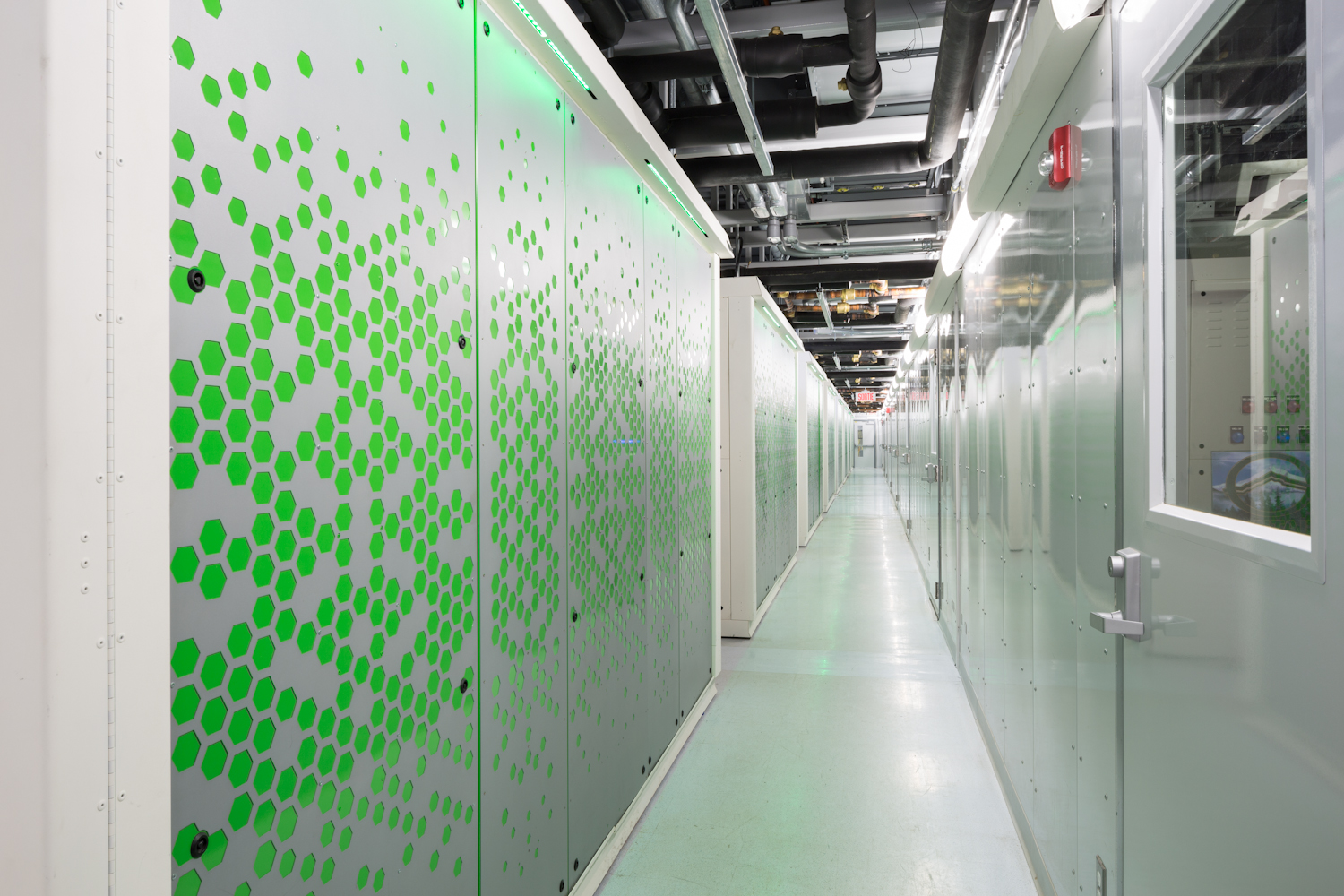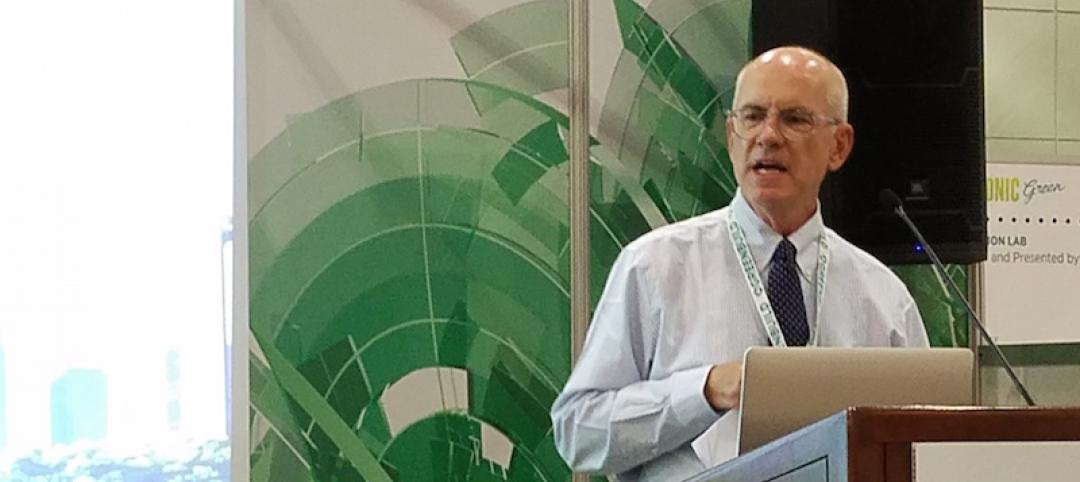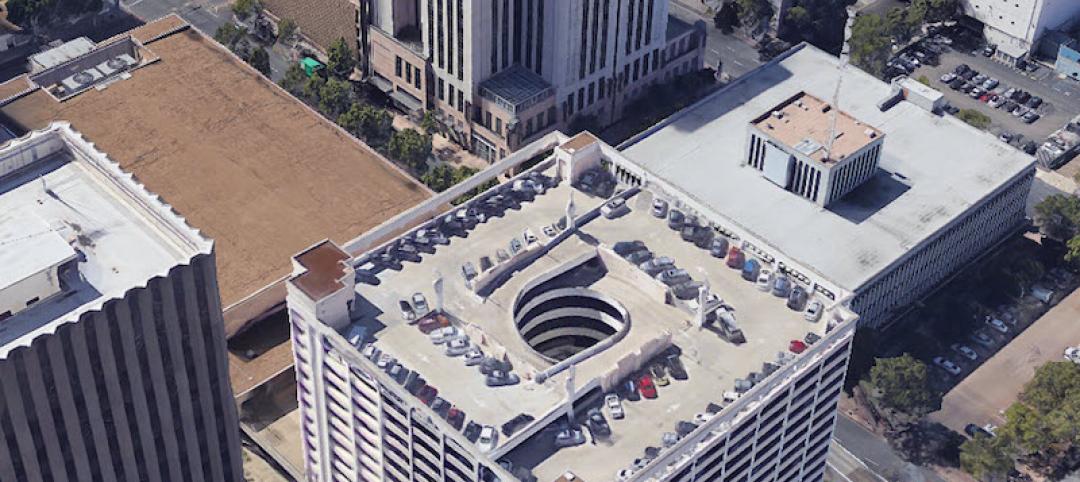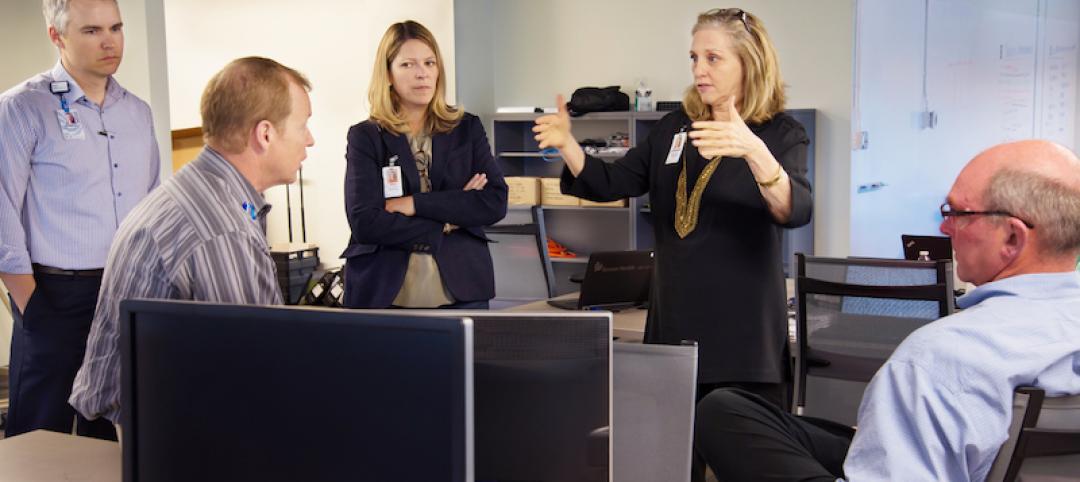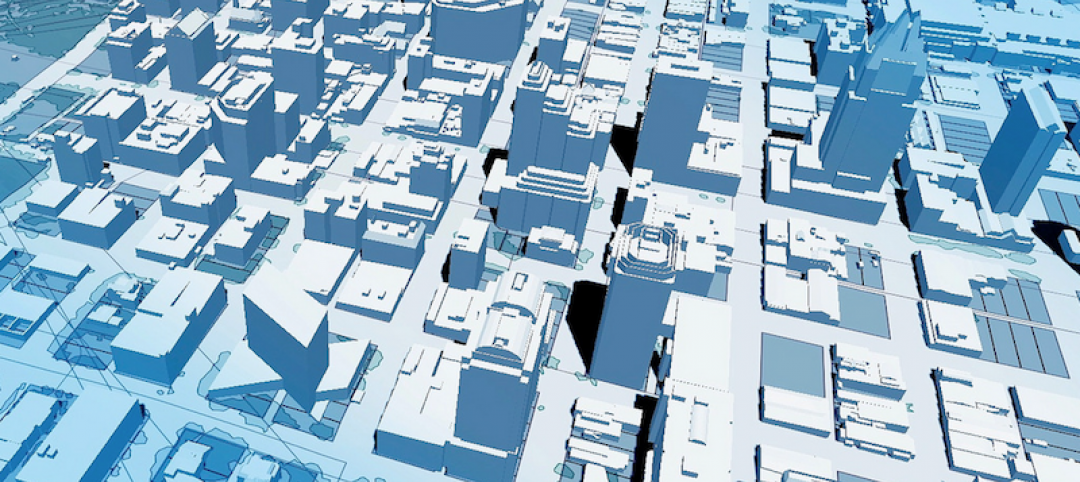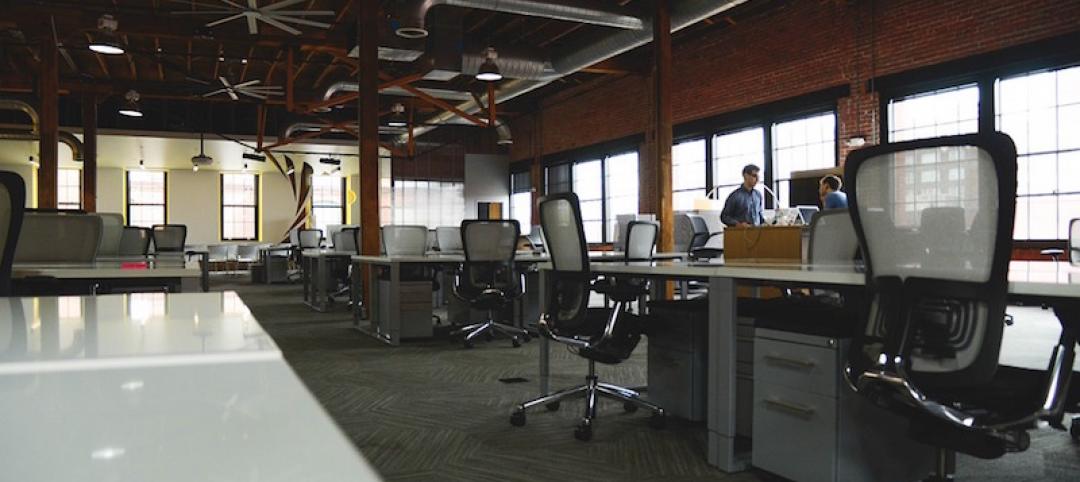If all goes as planned, Canada’s third-largest telecommunications company, Telus, next month will open what has been billed as one of the most energy-efficient data centers in the world. The $75 million, 215,000-sf facility, located in Kamloops, B.C., is projected to use up to 80% less power and 86% less water than a typical data center of its size. Its peak power utilization effectiveness (PUE)—the ratio of total energy used by the data center to the energy delivered to the computing equipment—is estimated at a minuscule 1.15.
The “secret sauce,” according to the facility’s contractor, Skanska, is a patented cooling technology, called eOPTI-TRAX, that replaces the traditional chiller plant. Together with its modular data center partner, Inertech, Skanska supplied the distributed, closed-loop system, which greatly expands the temperature range at which a facility can utilize outdoor air for “free” cooling. Telus’ Kamloops Internet Data Centre, for instance, will be able to use 100% outside air for cooling when temperatures are as high as 85°F—a huge improvement over the 45°F threshold typical with traditional chiller plant setups.
In lieu of underfloor air distribution, which requires numerous fans to push cold air toward the racks to cool the servers, the eOPTI-TRAX approach uses a contained hot- and cold-aisle design with optimized air circulation in the server aisles and liquid refrigerant coils lining the inside of the rear walls of the server rack to draw and absorb the heat. The scheme reduces hot-aisle temperatures from 160°F to just 75°F, according to Skanska.
The Telus project is among a handful of recently completed data centers that are raising the bar for energy and water efficiency. Building Teams are employing a range of creative solutions—from evaporative cooling to novel hot/cold-aisle configurations to heat recovery schemes—in an effort to slash energy and water demand. In addition, a growing number of data center developers are building facilities in cool, dry locations to take advantage of 100% outdoor air for cooling.
The National Center for Atmospheric Research’s new $70 million, 153,000-sf Wyoming Supercomputing Center in Cheyenne, for instance, uses the cool, dry air in combination with evaporative cooling towers to chill the supercomputers 96% of the year. Even when factoring the facility’s administrative offices, the building’s ultimate PUE is projected to be 1.10 or less, placing it in the top 1% of energy-efficient data centers worldwide. Where possible, the data center reuses waste heat for conditioning the office spaces and for melting snow and ice on the walkways and loading docks. Chilled beams provide efficient cooling in the administrative areas.
Facebook’s new model for data centers
While a temperate climate can be hugely advantageous for data center owners, it’s not a requirement for achieving a low PUE and WUE (water usage effectiveness), say data center design experts. Building Teams and technology providers continue to develop schemes that can operate efficiently at higher temperatures and relative humidity levels.
Take Facebook’s data center in Forest City, N.C., for example. Unlike the company’s other data center locations in Prineville, Ore., and Lulea, Sweden, the Forest City facility sits in a warm, humid climate—yet it has been able to achieve a PUE on par with the other installations, at 1.07, according to Daniel Lee, PE, Data Center Design Engineer at Facebook.
“Last summer, we had the second-hottest summer on record in Forest City and we didn’t have to use our DX system (direct expansion coils) system,” says Lee. “Although it was hot, with highs of 103°F, the relative humidity was low enough so that we could use the water (evaporative cooling) to cool the space.”
The trick, says Lee, is a simplified, holistic approach to data center design that optimizes not only the building mechanical systems, but also the computer hardware (servers and racks) and software applications—all with an eye toward reliability and energy efficiency. Traditional mechanical components—UFAD, chillers, cooling towers, etc.—are replaced with a highly efficient evaporative cooling scheme that uses 100% airside economization and hot-aisle containment. An open-rack server setup with exposed motherboards greatly reduces the energy required to cool the equipment. The result is a facility with fewer moving parts to break down that can operate efficiently at interior temperatures in excess of 85°F.
Facebook made waves in 2011 when it made public its design specs for its first in-house data center, in Prineville, under a program called the Open Compute Project. Modeled after open-source software communities, the program relies on crowd sourcing to share and improve on Facebook’s base data center scheme.
“We give the design away; you can take it and build it yourself,” says Chuck Goolsbee, Datacenter Site Manager at Facebook’s Prineville location. “All the components are there to build it in sort of a LEGO-like manner, from the building itself down to the servers.”
Facebook expects big things from the Open Compute Project. Many of the core component suppliers are involved—including Dell, Hewlett-Packard, Intel, and AMD—and thousands of data center experts have participated in engineering workshops and have given feedback to the group.
“Fifteen years from now, the DNA from Open Compute will be in every data center in the world,” says Goolsbee.
Related Stories
Building Technology | Oct 7, 2016
How much is that LEED point worth? A new tool provides answers
Autocase analyzes the financial, social, and environmental benefits of certification.
Sponsored | BIM and Information Technology | Oct 3, 2016
A laser scanning solution for challenging topographic surveys
DeWalt Corporation, which has completed thousands of surveys over the last 50 years, began using 3D laser scanning technology nearly five years ago.
BIM and Information Technology | Sep 15, 2016
8 tips for perfecting co-location
Experts share tips and tricks for maximizing cross-team collaboration.
BIM and Information Technology | Sep 12, 2016
Draft of 2016 version of the LOD Specification has been released for public comment
The comment period is open until Sept. 23.
BIM and Information Technology | Sep 7, 2016
Energy Star Portfolio Manager tool updated to factor in waste management
The costs and benefits of managing 29 types of waste are now included.
BIM and Information Technology | Aug 30, 2016
BIM GIANTS: A ranking of the nation's top BIM design and construction firms
HOK, Perkins+Will, Turner Construction Co., The Whiting-Turner Contracting Co., Jacobs, and Thornton Tomasetti top Building Design+Construction’s annual ranking of the nation’s largest BIM AEC firms, as reported in the 2016 Giants 300 Report.
BIM and Information Technology | Aug 30, 2016
New service from CBRE provides deeper insights into in-building wireless network experiences
With dependable cellular and Wi-Fi coverage a must-have amenity for today’s businesses, CBRE to certify in-building network quality through new Cellular Signal Mapping service
BIM and Information Technology | Aug 22, 2016
The wicked problem of interoperability
Building professionals are often put in a situation where solving problems with the ‘best tool for the job’ comes at the cost of not being able to fully leverage data downstream without limitation, writes Proving Ground's Nathan Miller.
Contractors | Aug 10, 2016
Dodge launches new app to simplify pros' search for suitable projects to bid and work on
The product, called PlanRoom, could be particularly useful in sharing data and communications among AEC teams.
BIM and Information Technology | Aug 9, 2016
How to improve a project presentation with animated GIFs
Animated GIFs are a simple tool that can explain a large amount of intricate information in an easy to understand, streamlined manner.


